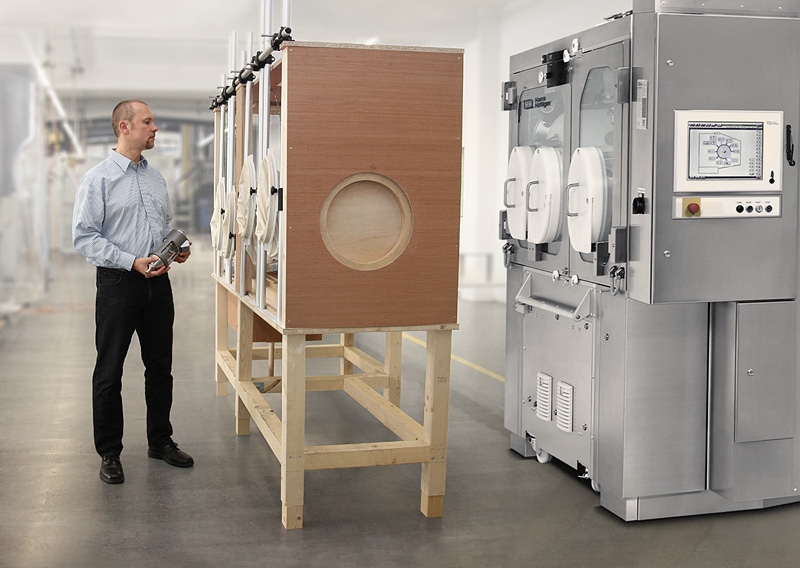Is it correct to speak about containment instead of barrier technology?
Brugger: No, even if the two are often equated. The generic term is barrier technology. If we talk about product protection, we are in the field of aseptics. However, if we look at operator and environmental protection, we are talking about the issue of containment. Confusion is also caused by the fact that in the German-speaking countries the term containment only refers to the enclosure, whereas in the English-speaking countries it means the entire process, including handling and interface difficulties.
Is Harro Höfliger active in both fields?
Yes, with a great deal of commitment since the establishment of our department in 2008. After all, highly active ingredients, for example, in cancer therapy or in hormone treatments are used more and more frequently. Independent market researchers expect an annual average growth of the HPAPI-market (High Potency API) of almost 15 percent between 2015 and 2022. So, there is a lot of potential. On the other hand, increasingly complex active ingredients are processed, which often cannot be terminally sterilized and therefore have to be processed aseptically.
What kind of aseptic issues do you address?
There are clear guidelines for aseptic machines like the FDA guidance “Sterile Drug Products Produced by Aseptic Processing“ or the EC-GMP guidelines. Basically, it is about the aseptic processing of sterile products. Germs, viruses and spores, in other words, all sorts of contaminants have to be kept away from the product. We implement isolators, open and closed RABS (Restricted Access Barrier System) with integrated laminar flow systems. Due to rapid transfer ports or active and passive mouse-holes, interfaces no longer constitute a problem. Naturally, we have also mastered complex processes with strict temperature or humidity control requirements, as well as under an inert gas atmosphere. For example, we implemented a system in which cryo pellets are filled under a nitrogen atmosphere.

A wooden mock-up (left) is used to simulate operation. The findings are implemented on the machine (right).
What role do people play in this?
A double role – because people are the main disruptive factor on the aseptic side. Just think of germs and particles such as skin dander, clothing abrasion or sweat drops. On the other side, when processing highly active ingredients, containments are required to protect us from these substances.
How do you determine the protective measures?
An important, but not the only aspect is the OEL-limit (Occupational Exposure Limit) that has been established and must be met. Many questions have to be answered first. What properties does the product have? How long does the operator work on the machine per day? What is the concentration of the active ingredient in the final product? What external interfaces are involved in the process? What intervention methods does the operator need? Only when all these factors are known, can we determine the probability of exposure and design the containment solution.
What tools do you use?
Naturally, we use all modern tools such as computer-aided design (CAD), computational fluid dynamics (CFD) and virtual reality. In addition we build wooden mock-ups of the entire machine. This is necessary to simulate operation. Together with our customers, all conceivable process steps are simulated, including setup, troubleshooting, and cleaning. These trial sequences often take several days. Then we work out the ergonomic details. With this method and using realistic weights, operators can test the system through glove ports and judge whether this is manageable in their daily work routine.
Bernhard Brugger, Department Leader Design & Development Isolators & Containment Systems at Harro Höfliger,
previously spent his study time in the cleanroom. His long-term experience gathered at the Fraunhofer-Gesellschaft paved his way in aseptics and containment. After having worked in various positions in the industry – always close to the topic – he came to Harro Höfliger in 2008 where he founded the barrier technology department. Today he manages a team of nine employees.
Download this article as PDF file
Photos: Harro Höfliger
